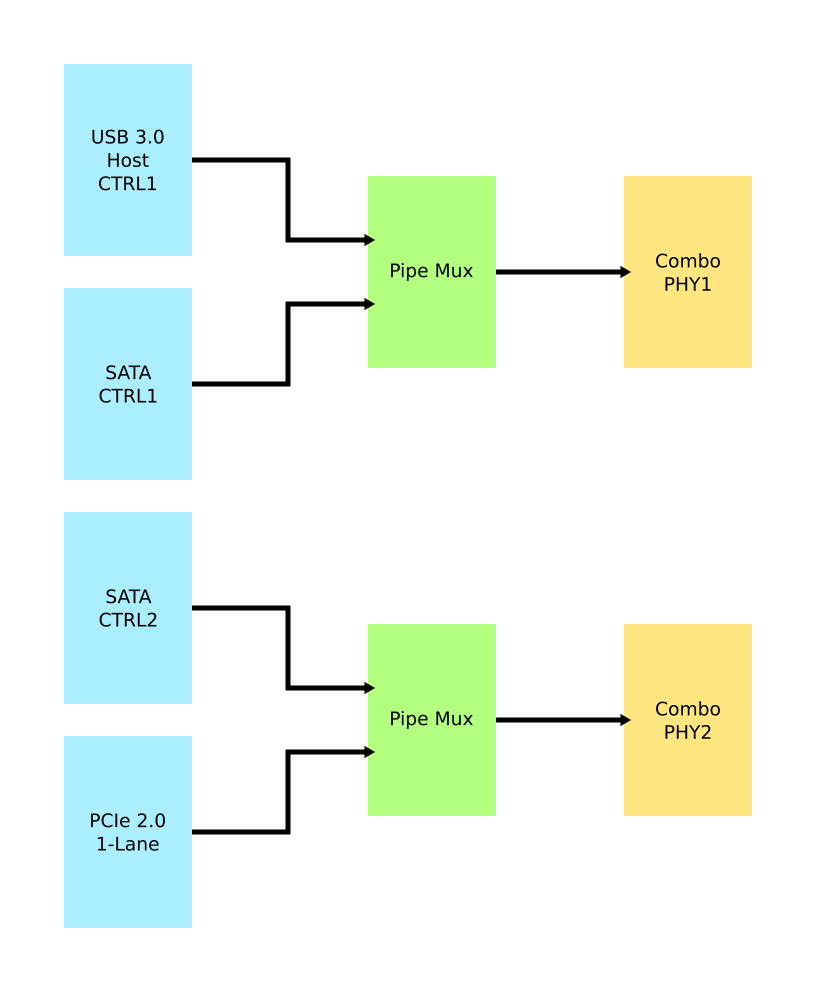Specifications
![]()
Based on Rockchip RK3566
CPU Architecture
AArch32 for full backwards compatibility with ARMv7
ARM Neon Advanced SIMD (single instruction, multiple data) support for accelerated media and signal processing computation
Includes VFP hardware to support single and double-precision operations
ARMv8 Cryptography Extensions
Integrated 32KB L1 instruction cache and 32KB L1 data cache per core
512KB unified system L3 cache
TrustZone technology support
GPU (Graphics Processing Unit) Capabilities
4x Multi-Sampling Anti-Aliasing (MSAA) with minimal performance drop
128KB L2 Cache configurations
Supports OpenGL ES 1.1, 2.0, and 3.2
Supports Vulkan 1.0 and 1.1
Supports OpenCL 2.0 Full Profile
Supports 1600 Mpix/s fill rate when at 800MHz clock frequency
Supports 38.4 GLOP/s when at 800MHz clock frequency
NPU (Neural Processing Unit) Capabilities
Neural network acceleration engine with processing performance of up to 0.8 TOPS
Supports integer 8 and integer 16 convolution operations
Supports the following deep learning frameworks: TensorFlow, TF-lite, Pytorch, Caffe, ONNX, MXNet, Keras, Darknet
System Memory
RAM Memory Variants: 2GB (SOQuartz only), 4GB, 8GB LPDDR4.
Network
10/100/1000Mbps Ethernet
Wi-Fi 802.11 b/g/n/ac with Bluetooth 5.0 (optional on model A, built in on model B)
Storage
microSD - bootable, supports SDHC and SDXC, storage up to 2TB
USB
Model A: 2 USB 2.0 host ports, 1 USB 2.0 OTG port, 1 USB 3.0 host port
Model B: 1 USB 2.0 host port, 1 USB 2.0 OTG port, 1 USB 3.0 host port
one native SATA 3.0 6Gb/s Port (only on model A, shared with USB 3.0 host port) (removed in newer revisions due to electrical signalling issues it caused)
optional eMMC module from 8GB up to 128GB
64 Mbit (8 MByte) SPI flash (Model B only), part number 25Q64DWZPIG in the schematic
eMMC Speeds
On a 64 GB eMMC module:
$ sudo hdparm -tT /dev/mmcblk1
/dev/mmcblk1: Timing cached reads: 2368 MB in 2.00 seconds = 1184.46 MB/sec Timing buffered disk reads: 452 MB in 3.01 seconds = 149.98 MB/sec
Expansion Ports
HDMI
eDP - 4 lanes of 2.7Gbps, up to 2560x1600@60Hz (only on model A)
DSI - Display Serial Interface, 4 lanes MiPi, up to 1440P on model A, 2 lanes MiPi, up to 1080p on model B
CSI - CMOS Camera Interface, 4 lanes MiPi up to 8 mega pixel on model A, 2 lanes MiPi up to 5 mega pixel on model B
TP - Touch Panel Port, SPI with interrupt on model A
RTC - Real Time Clock Battery Connector
VBAT - Lithium Battery Connector with temperature sensor input on model A
Wi-Fi/BT Module Header - SDIO 3.0 and UART on model A, built-in Wi-Fi/BT Module on model B
2x20 pins "Pi2" GPIO Header on model B, 2x10 pins GPO header on model A
PCIe x4 open ended slot on model A, m.2 slot on model B, one Gen2 lane due to SoC constraints
On Model A, the slot provides 10W of power for the 3.3V supply and however much power your 12V input power supply provides on the 12V supply
The PCIe implementation on the RK3566 is much more compatible with a wide range of devices compared to the one on the RK3399 used on the ROCKPro64. This means a lot more devices should work (excluding dGPUs due to a lack of cache snooping ability).
Combo PHYs

Several of the I/O options on the RK3566 used in the Quartz64 are using the same I/O lines, meaning that they cannot be used at the same time. The above diagram illustrates how they are connected.
In particular, USB 3.0 and the SATA connector on the board are mutually exclusive, and the PCI-e 2.0 lane can be reconfigured into a second SATA port, though an adapter cable needs to be fashioned for this to be useful.
GPIO Pins (Quartz64 Model A)
Attention! GPIOs are 3.3V!
| Assigned To | Pin no. | Pin no. | Assigned To |
|---|---|---|---|
3.3 V | 1 | 2 | 5 V |
I2C3_SDA_M0 a,b | 3 | 4 | 5 V |
I2C3_SCL_M0 a,b | 5 | 6 | GND |
CPU_REFCLK_OUT | 7 | 8 | UART2_TX_M0_DEBUG |
GND | 9 | 10 | UART2_RX_M0_DEBUG |
SPI1_MOSI_M1 | 11 | 12 | UART0_TX a |
SPI1_MISO_M1 | 13 | 14 | UART0_RX a |
SPI1_CLK_M1 | 15 | 16 | GND |
SPI1_CS0_M1 | 17 | 18 | SPDIF_OUT c |
GND | 19 | 20 | 3.3V |
Notes
a: can be a PWM pin
b: pulled high to 3.3V through 2.2kOhm resistor
c: low-pass filtered with cutoff of 220 MHz
Source: Page 28 of the board schematics.
GPIO Pins (Quartz64 Model B)
Attention! GPIOs are 3.3V!
Interesting alternate pin configurations are listed in [brackets].
| Assigned To | Pin no. | Pin no. | Assigned To |
|---|---|---|---|
3.3 V | 1 | 2 | 5 V |
[I2C3_SDA_M0] GPIO1_A0_3V3 | 3 | 4 | 5 V |
[I2C3_SCL_M0] GPIO1_A1_3V3 | 5 | 6 | GND |
GPIO3_C4_3V3 | 7 | 8 | UART2_TX |
GND | 9 | 10 | UART2_RX |
[SPI1_CS0_M1] GPIO3_A1_3V3 | 11 | 12 | GPIO3_A3_3V3 [I2S3_SCLK_M0] |
[I2S3_MCLK_M0] GPIO3_A2_3V3 | 13 | 14 | GND |
GPIO3_B0_3V3 | 15 | 16 | GPIO3_B1_3V3 |
3.3V | 17 | 18 | GPIO3_B2_3V3 |
GPIO4_C3_3V3 | 19 | 20 | GND |
GPIO4_C5_3V3 | 21 | 22 | GPIO3_C1_3V3 [SPI1_MOSI_M1] |
GPIO4_C2_3V3 | 23 | 24 | GPIO4_C6_3V3 |
GND | 25 | 26 | GPIO4_D1_3V3 |
I2C4_SDA_M0 | 27 | 28 | I2C4_SCL_M0 |
GPIO3_B3_3V3 | 29 | 30 | GND |
GPIO3_B4_3V3 | 31 | 32 | GPIO3_C2_3V3 [SPI1_MISO_M1] |
[SPI1_CLK_M1] GPIO3_C3_3V3 | 33 | 34 | GND |
[I2S3_LRCK_M0] GPIO3_A4_3V3 | 35 | 36 | GPIO3_A7_3V3 |
[SPDIF_TX_M0] GPIO1_A4_3V3 | 37 | 38 | GPIO3_A6_3V3 [I2S3_SDI_M0] |
GND | 39 | 40 | GPIO3_A5_3V3 [I2S3_SDO_M0] |
Source: Page 24 of the board schematics.



